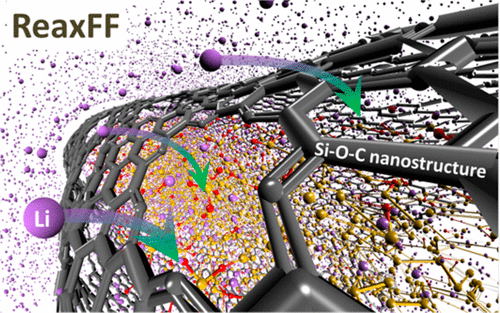Atomistic Simulation Protocol for Improved Design of Si-O-C Hybrid Nanostructures as Li-Ion Battery Anodes: ReaxFF Reactive Force Field
슈퍼관리자
2021-05-21
Atomistic Simulation Protocol for Improved Design of Si-O-C Hybrid Nanostructures as Li-Ion Battery Anodes: ReaxFF Reactive Force Field
-
Authors :
Byung Chul Yeo, Hyun Jung, Hong Woo Lee, Kang-Seop Yun, Hyungjun Kim, Kwang-Ryeol Lee, Sang Soo Han
-
Journal :
J. Phys. Chem. C
-
Vol :
121
-
Page :
23268-23275
-
Year :
2017

Abstract
Recently, silicon–oxygen–carbon hybrid nanostructures have received great attention as a promising anode material for Li-ion batteries, for which their diverse structures can be synthesized. Here, using molecular dynamics (MD) simulations with a reactive force field (ReaxFF), we studied the atomistic lithiation behaviors of sp2 carbon-coated Si and SiOx nanostructures, such as nanowires (NWs) and nanoparticles (NPs), in which various kinds and sizes of carbonaceous coating layers were explored. The introduction of an sp2 carbonaceous coating layer to Si-based anodes makes Li diffusion more facile, which leads to improved battery performances such as faster charge/discharge rates. Moreover, the carbonaceous coating layer can also provide a buffer effect to volume changes during lithiation along with the well-known functions of preventing the loss of electrical continuity and increasing electrical conductivity of Si-based anodes. However, a thick carbonaceous coating layer can strongly suppress the volume expansion behavior of Si-based nanostructures and thus prevent Li penetration into the nanostructures, leading to a very low Li capacity. According to our ReaxFF-MD simulations, the critical size of the carbonaceous coating layer that can act as a buffer layer is approximately C/Si = 2.4, which is the circumference ratio of the carbonaceous coating layer over the Si NWs. For a coating layer that has a higher ratio, Li cannot penetrate into the Si NWs; instead, they exist only on and in the sp2 coating layers including in the spaces between two graphene layers. Moreover, the shape of the Si nanostructures (e.g., NW and NP) does little to affect the anode properties, such as Li capacity and volume change, although Si NP confined in a carbon nanotube shows anisotropic volume expansion behavior during lithiation. We expect that the ReaxFF will provide a useful protocol for designing Si–O–C hybrid anodes to obtain better performing Li-ion batteries.















